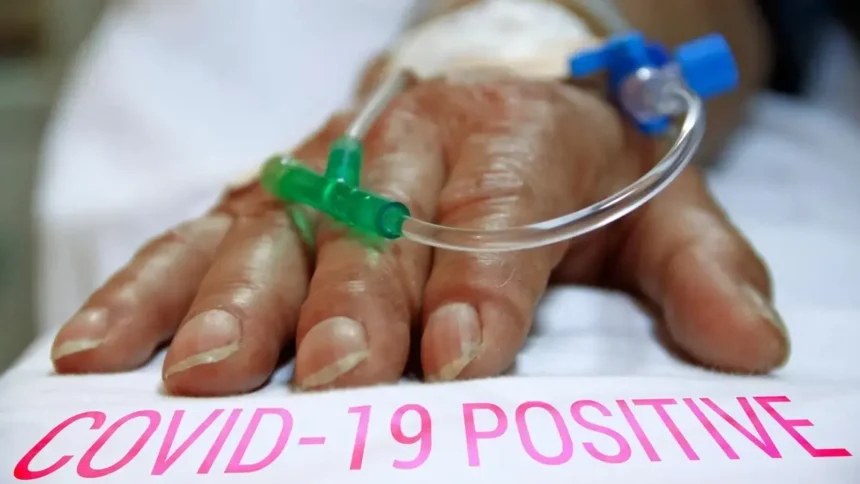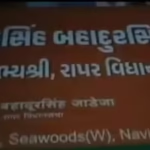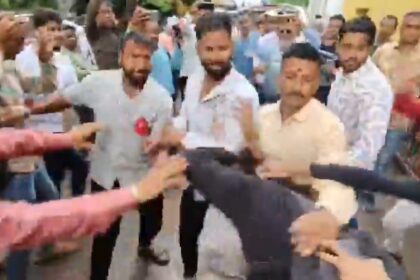Maharashtra Records a COVID-19 Uptick — A Renewed Focus on Public Health
In a quiet but notable shift, Maharashtra, one of India’s most populous and industrially dynamic states, has recorded a fresh batch of COVID-19 cases, prompting public health authorities to revisit their surveillance and readiness protocols. On a day when citizens expected routine headlines, the health department’s bulletin brought an unsettling update: nine new COVID-19 cases, five of which originated in Mumbai. The total active tally for the state now stands at 31.
While the numbers may seem modest compared to the peaks seen during earlier waves, the significance lies in the pattern. Infections, once dormant or sporadic, have shown signs of localized resurgence. Experts and epidemiologists are calling for calm, but not complacency.
Mumbai, often regarded as India’s financial capital and a densely populated urban sprawl, is always a sensitive zone when it comes to infectious disease management. Its healthcare system, though robust and experienced from previous pandemic phases, faces the added pressure of maintaining vigilance amid an overall national decline in cases. The city’s international airport, bustling local trains, and compact residential zones make it particularly vulnerable to transmission clusters.
Public health officials in Mumbai have already activated contact tracing protocols. According to sources in the Brihanmumbai Municipal Corporation (BMC), all five cases in the city are under observation, with mild or no symptoms. No hospitalization has been required thus far. The individuals affected are believed to have been vaccinated, though booster coverage remains an area requiring further push.
Simultaneously, in districts outside Mumbai—where the remaining four cases were detected—local authorities have stepped up testing in high-density zones such as markets and transport hubs. The state health ministry has confirmed that no new variant has been discovered in genome sequencing results as of now, a relief that tempers the growing anxiety.
The announcement also arrives at a time when Maharashtra’s healthcare machinery is juggling seasonal challenges such as monsoon-related illnesses, including dengue and influenza. The reemergence of COVID-19, however contained, adds to the logistical complexity and the emotional fatigue of healthcare professionals on the ground.
Meanwhile, the general public’s response has been mixed. Some have begun donning masks again on suburban trains and at crowded locations, while others continue to move through daily life with little change, reflecting a phenomenon experts describe as “pandemic fatigue.” The state government has not reimposed any restrictions, but has urged citizens—especially the elderly and immunocompromised—to remain cautious and maintain hygiene protocols.
As Maharashtra embarks on this fresh chapter of COVID-19 vigilance, questions loom large: Is this a precursor to a larger trend? Will the healthcare system need to pivot once again? And most importantly, how prepared is the public to respond if the situation escalates?
As Maharashtra faces a fresh uptick in COVID-19 cases, the state’s healthcare infrastructure stands under renewed scrutiny. Having weathered multiple waves since 2020, Maharashtra is no stranger to the demands of pandemic response. From establishing jumbo COVID care centers to scaling up oxygen supply chains and ICU facilities, the state has shown both resilience and adaptability in the past.
Today, that same resilience is being quietly reactivated.
Hospitals across Mumbai and key cities like Pune, Nagpur, and Nashik have been placed on alert. According to state health officials, these hospitals have been instructed to review their COVID-19 protocols and ensure functional triage systems are in place. Stocks of essential supplies — from PPE kits and antiviral drugs to oxygen cylinders and pulse oximeters — are being audited and replenished.
Medical professionals, though cautiously optimistic, remain realistic about the challenges. “We have the experience now. But fatigue is real — not just for the public but also for our frontline workers,” said Dr. Manali Patil, an infectious disease specialist in Mumbai’s KEM Hospital. She adds that while the new cases are currently mild, even a small spike can strain outpatient services if not managed early.
At the administrative level, the state government has called for a coordinated district-wise preparedness review. This includes reactivating local COVID-19 task forces, reviewing ambulance availability, and checking the readiness of telemedicine systems for remote patient consultations.
One of the standout aspects of Maharashtra’s pandemic response in the past has been its use of data dashboards to track real-time hospital bed availability and case trajectories. These systems are now being updated to integrate the latest alerts and patient data, ensuring seamless coordination among public and private hospitals.
Education campaigns are also being planned again. Though mask mandates haven’t returned, public messages encouraging caution have reappeared in digital signage on local trains, buses, and highway toll booths. Authorities are also leveraging social media influencers and regional language radio to target younger populations who may feel invincible after past recoveries or vaccinations.
Moreover, rural health centers — often underfunded and under-equipped — are being advised to increase collaboration with district hospitals. Mobile health vans are back in operation, especially in tribal belts and hilly regions where access to primary care is inconsistent.
The Maharashtra health ministry has also reached out to private practitioners, asking them to report any sudden flu-like surges in OPDs that could be early signs of COVID-19 clusters. This grassroots-level surveillance, health officials believe, will serve as the state’s early warning system.
As we continue into this renewed phase of monitoring and containment, the critical question is no longer whether Maharashtra has the infrastructure — it’s whether the momentum of vigilance can be sustained in a climate of waning public concern.
As Maharashtra cautiously navigates its latest brush with COVID-19, a central pillar of its containment strategy is the state’s immunization coverage. While vaccination was once a nationwide headline and a daily metric of hope, the current scenario reflects both progress and complacency. With a fresh set of nine COVID-19 cases recently reported, the spotlight has returned to how well the population is shielded—especially when it comes to booster doses.
India’s initial vaccination rollout was one of the largest in the world, and Maharashtra consistently ranked among the top-performing states. Over 100 million doses were administered across the state during the primary drive. However, with the decline in perceived threat and fewer visible consequences, booster uptake has faltered. According to health department estimates, less than 30% of eligible adults have received a precautionary dose (commonly known as a booster), a figure that is even lower in rural districts and among younger populations.
This booster gap is now a pressing concern. Medical experts argue that while the primary two-dose protection is effective in preventing severe disease, waning immunity over time—especially in the elderly or immunocompromised—means that boosters play a critical role in preventing outbreaks from turning dangerous.
Dr. Rajesh Ghosh, a public health researcher affiliated with the Indian Council of Medical Research (ICMR), noted, “A vaccine is only as good as the arm it reaches. We’ve seen tremendous success with coverage initially, but the booster campaign lost steam as fear receded.” He adds that public health messaging needs to re-emphasize the evolving nature of COVID-19 and the benefits of top-up immunity, especially in light of new variants that may escape earlier antibodies.
Maharashtra’s vaccination challenge is not just logistical, but psychological. Pandemic fatigue has given way to what experts call “immunity confidence”—a belief among many that they are either naturally immune or permanently protected due to past vaccination or infection. This attitude is proving difficult to reverse. Surveys conducted by the State Health Department in Pune, Nagpur, and Kolhapur show that less than 40% of unboosted individuals intend to get a precautionary dose unless there’s a government mandate or a visible surge in cases.
To counter this apathy, the health ministry has launched fresh micro-campaigns targeted at demographic pockets with low uptake. Urban centers like Mumbai and Thane are using mobile apps to nudge users with reminders, while rural districts have started community-level outreach via Anganwadi workers and local panchayat leaders. In tribal regions, vans equipped with both vaccines and health educators are being deployed to bust myths and address hesitancy.
A notable innovation this time is the use of workplace immunization drives. In Mumbai’s corporate hubs like BKC and Lower Parel, companies are collaborating with private hospitals to offer booster shots during office hours. This strategy not only eases accessibility but also normalizes the act of staying updated with vaccination as part of responsible citizenship.
Another front in the booster battle is colleges. Maharashtra’s education ministry, in partnership with health officials, has advised universities and junior colleges to conduct awareness campaigns and host immunization camps. Young adults—while generally at lower risk of severe disease—are often asymptomatic carriers, and public health experts warn that unchecked transmission in this group could seed clusters in vulnerable communities.
Religious leaders and community elders have also been brought into the fold. In areas with high hesitancy due to misinformation or vaccine myths, clerics and respected social figures are being encouraged to lead by example. A recent campaign in Aurangabad saw local imams publicly taking booster shots, significantly increasing turnout in mosques and community centers.
Importantly, the state has ensured that vaccine supplies are sufficient. Maharashtra currently has over 15 lakh unused booster doses available in government storage, most of which are nearing expiry. This logistical fact adds urgency to the drive—not only to protect lives but also to avoid wastage of public resources.
The media, too, has been re-engaged. Marathi news channels and FM radio stations are running PSAs urging people to “complete the circle of protection” by getting their boosters. Television spots featuring real COVID-19 survivors—particularly those who had not taken boosters—are being used to humanize the campaign and evoke a sense of personal risk.
Still, health officials are walking a fine line. Aggressive messaging without a visible threat could backfire, breeding resentment or non-compliance. Hence, the current strategy relies on a mix of informative nudging and strategic visibility of health workers, mobile vans, and public figures promoting the vaccine campaign without triggering panic.
As Maharashtra advances into this critical public health phase, the state’s ability to close its vaccination gaps will likely determine the trajectory of infection over the coming weeks. With infrastructure in place and cases still mild, the real test is whether citizens will act before necessity forces their hand.
The fresh rise in COVID-19 cases in Maharashtra, albeit numerically limited for now, has reopened conversations about the potential economic ripple effects of even a small-scale resurgence. For a state that contributes over 14% to India’s GDP and is home to several critical sectors—ranging from financial services and manufacturing to entertainment and tourism—the cost of caution versus complacency is under intense review.
In Mumbai’s central business districts like Bandra-Kurla Complex and Nariman Point, where corporate offices have only recently resumed full physical attendance, HR heads are monitoring the developments closely. Many companies have quietly reintroduced hybrid work options as a preventive strategy, not a reactionary measure. This shift, while subtle, echoes a familiar anxiety from the pandemic’s earlier phases, particularly among smaller firms that lack deep operational buffers.
Small businesses, especially those in retail, hospitality, and informal sectors, remain among the most vulnerable. For vendors, taxi drivers, restaurant owners, and event organizers who rely heavily on foot traffic and in-person engagements, even a modest decline in consumer confidence can have outsized consequences. A few establishments in Mumbai suburbs have already reported dips in evening footfall following the announcement of new COVID-19 cases.
“The virus doesn’t have to be widespread to disrupt economic behavior,” notes Prof. Rajesh Nair, an economist at Mumbai University. “The memory of lockdowns and the financial trauma they caused is still fresh for many. So, if people preemptively avoid public spaces or gatherings, local economies will feel the tremors first.”
The state government, aware of these sensitivities, has not indicated any move toward restrictive measures. Instead, it is leaning into the principle of “economic continuity with caution.” Fiscal planning committees have already begun modeling scenarios based on three-month and six-month projections of potential outbreaks. These exercises involve estimating possible revenue drops in sectors like tourism, real estate, and transport, while also preparing buffer resources for emergency welfare schemes.
Maharashtra’s industrial belts, particularly those in Pune, Aurangabad, and Nashik, are also being monitored for absenteeism and operational delays. While large manufacturers typically have well-structured protocols for sanitization and workforce health monitoring, small and medium enterprises (SMEs) often struggle with compliance due to cost concerns. To bridge this, the state’s MSME department has proposed subsidized testing kits and digital health tracking tools for factory workers.
Another area of concern is the informal economy, which accounts for a significant portion of the state’s labor force. During the previous waves, the unorganized sector suffered acutely due to lack of safety nets. This time, state officials have signaled a preemptive focus on continuity of cash transfers, ration subsidies, and access to primary healthcare for daily wage earners, should the situation escalate.
The financial services sector—especially banking and insurance—is more equipped than ever before to operate under pandemic-era disruptions, thanks to digitization and remote infrastructure developed during earlier phases. However, financial planners caution against any panic-driven withdrawal behavior among investors, which could shake short-term market confidence.
Maharashtra’s experience from previous waves offers both a blueprint and a cautionary tale. While technology adoption, policy agility, and decentralized governance helped soften the blow in many sectors, the economic cost of health crises has always been compounded by unpredictability. This time, the state hopes to balance proactive health management with sustained economic flow.
In any public health crisis, the battle for public safety is fought on two fronts—medical response and information management. As Maharashtra experiences a fresh stir in COVID-19 cases, the spotlight turns not just to hospitals and testing labs but also to WhatsApp groups, newsrooms, Twitter feeds, and regional radio stations. For the state government, ensuring that accurate, timely, and measured information reaches its diverse population has become a mission-critical task.
The role of communication during the pandemic’s earlier phases has already shown how vital public perception is in determining policy effectiveness. Misinformation, when left unchecked, can unravel even the most comprehensive preparedness plans. Maharashtra’s leadership appears well aware of this and has reactivated its strategic communication teams to counter the twin threats of panic and apathy.
Government Messaging: A Calibrated Approach
Rather than flooding the public with alarmist alerts, the state’s Department of Public Health has opted for a calibrated tone—informative, reassuring, but firm. Daily bulletins now include not just raw case numbers but context: hospitalization status, symptom profiles, and vaccination details. This helps keep the narrative rooted in facts rather than fear.
Information is being disseminated in Marathi, Hindi, and English to ensure regional accessibility. Public transport hubs such as railway stations, ST bus depots, and metro stops have resumed playing short audio messages emphasizing mask hygiene, cough etiquette, and voluntary testing.
Media Briefings and Press Discipline
Recognizing the media’s influential role, the Chief Minister’s Office (CMO) and the Health Minister’s Secretariat have scheduled regular briefings with state-level journalists and editors. These briefings are aimed at preempting misinformation by addressing key questions before they spin out on social media.
A weekly Q&A session on Doordarshan Sahyadri and All India Radio has also been introduced, featuring rotating panels of doctors, public health experts, and local officials. These sessions tackle not only virology but also vaccine safety, mental health, and economic concerns—offering a holistic perspective.
Digital Vigilance and Social Media Campaigns
On the digital front, Maharashtra’s cyber cell has been tasked with monitoring fake news, misleading claims, and unverified “cures” circulating online. Platforms like Facebook, Instagram, and WhatsApp have been flagged for potential risk zones, particularly in urban slums and rural belts where informal messaging chains dominate.
In response, the BMC and other municipal corporations have collaborated with content creators and regional influencers. Campaigns with hashtags like #StaySafeMumbai and #MaskIsBack have already started gaining traction. These campaigns combine humor, local dialect, and relatable characters to convey messages that might otherwise be ignored if delivered by officials in a formal tone.
Restoring Trust in Vaccination and Boosters
A key component of public messaging is countering vaccine hesitancy and promoting booster dose uptake. During previous waves, Maharashtra saw impressive first-dose and second-dose coverage, but booster uptake lagged due to misinformation and logistical fatigue.
To address this, new infographics and explainer videos—featuring community leaders, elderly citizens, and young professionals—are being circulated. The aim is to normalize the idea of continued vaccination as part of routine life, not as an emergency measure. Mobile vans now carry banners with QR codes linked to government portals for nearest vaccination center details.
The Role of Community Networks
Local governance structures—gram panchayats, mohalla committees, housing societies—are also playing a pivotal role. Weekly meetings are being held in urban chawls and rural talukas where municipal representatives address residents directly. These community-level dialogues create a feedback loop, allowing authorities to correct misconceptions before they escalate.
In the face of a fatigued yet digitally hyperactive population, Maharashtra’s COVID-19 communication strategy is betting on decentralization, personalization, and linguistic inclusivity. The emphasis is clear: clear information can save lives as effectively as medical interventions.








